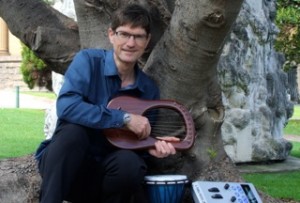Get a head start on the French horn
Start your kids early with the new generation single 3/4 sized Cambridge Cadet children's French horn. A baby French horn is the perfect choice until children are ready to tackle a full sized double horn.
Regardless of your French horn tutor's preference for teaching, we have you covered by offering either the single Bb or single F French horn.
Unlike cheaper brands the Cambridge Cadet single French horns are top quality and made by the same factory as better known brands. Packaged in a compact and versatile case accompanied with mouthpiece and care products, owning and learning a kid's French horn could not be easier!
Dr Michael Dixon provides us with his independent review of the Cambridge Cadet French horns and offers his learning guide to teaching the kid's French horn.
These small wrap horns are ideal for primary school students who want to get to love the sound of the French horn. Today I spent a couple of minutes with each of the 31 small wrap horns at Sax & Woodwind…and Brass and found the quality consistent throughout. Each one is light yet sturdily made, easy to hold, and makes a good horn sound. They are excellent level entry horns for beginners, and will serve a student well right though till needing a double horn.
Check them out HERE or come in and have a try!
Learning the French Horn: a guide for teachers by Dr Michael Dixon
With small wrap, light horns, primary school students can readily take up the French horn. A student needs a little willingness to listen to pitch, but anyone who can sing can play the horn. Some consistency in producing the same pitch over and over is usually possible after a month.
The single B-flat horn has two notes (without valves) that are easy to play for beginners: written C and written F (middle C and F on the first space of the treble clef). The valves work in the same way as other brass: the middle valve (valve 2) lowers the pitch by a semitone; valve 1 (nearest the lips) lowers the pitch a tone; valve 3 by a minor 3rd. Combinations are readily available.
The single F horn has 2 notes (without valves) that are easy to play: written C and written E (middle C and the 3rd above). Some students will find either G (above or below) reasonably easy, some will take awhile to produce them easily.
The horn is always notated in F, regardless of whether the actual instrument is in B-flat or F. Every written pitch sounds a perfect 5th lower.
The most important thing when teaching the horn is to place the mouthpiece on the lips in the best way: the bottom of the rim should be on the bottom of the bottom lip. This asymmetrical arrangement allows for easier access to the full range of the horn. Placing the mouthpiece equidistant will hinder the lower register after a few years and often takes a few months of hard work for the student to alter.
Another important part teaching horn or using horn players in primary school bands is that the music often goes too high in the range too early. I have found some other band instruments have difficulties with much beginner band music so have written a 1st year program called Play With Ease. For instance the first note the flutes play is an A, which is simple for small hands to negotiate. The band plays chords from the outset. Bar 1 is B-flat chord played by some instruments and bar 2 is an F chord played by other instruments. Each instrument type gets to play of their easiest notes to produce at the very beginning. Here is a link to explore this: https://www.australiancomposers.com.au/collections/composers-and-authors/michael-hugh-dixon?page=2
A good alternative is to allow the horn players to play the 'French Horn Only' pages which some band methods have. The horns will sound a 5th different to the other instruments but will develop their embouchures at a good pace.
Dr Michael Dixon
DCA MPhil MMus FTCL LRSM MTAA

Born in New Zealand in 1961, Michael began piano studies with his grandmother and horn with his father, Hugh. Michael has held full-time positions with a number of Australian orchestras including that of Principal Horn in the Queensland Philharmonic Orchestra and Associate Principal with the Queensland Orchestra (now QSO). Michael now freelances mostly in Sydney where he is guest principal for the Australian Opera & Ballet Orchestra. He has recently been guest principal for the Australian Chamber Orchestra, the Canberra Symphony, Canberra International Music Festival, Melbourne Symphony Orchestra as well as the Australian Brandenburg Orchestra and Ludovico’s Band, the last two on natural horn. Chamber music credits include his contemporary ensemble LOCANA since 2003 and Omega Ensemble from 2013.
5239